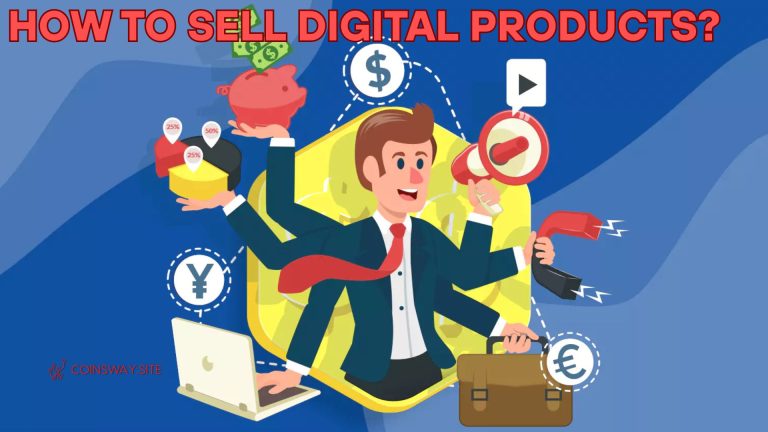How to sell digital products? Nowadays, one of the most lucrative and scalable internet income streams is the sale of digital goods. Anything that can be downloaded or accessed online is considered a digital product, including software, eBooks, courses, photographs, design templates, music, printables, and more. You will learn how to efficiently develop, promote, and sell digital products with this tutorial.
Choose the Right Digital Product.
Before you start selling, you need to decide what kind of digital product you’ll offer. The key is to focus on a product that aligns with your skills and meets a market demand. Some popular digital products include
- eBooks—Great for authors and educators.
- Online Courses—Ideal for experts in a subject.
- Software or Apps—Best if you have programming skills.
- Printables—Calendars, planners, and worksheets.
- Design Assets—Fonts, templates, and illustrations.
- Stock Photos or Music—Useful for creators and musicians.
Research to understand what your audience needs. Use platforms like Google Trends, Reddit, or Quora to identify common problems or interests that your product could solve or address.
Create High-Quality Content.
Once you’ve identified your product, invest time in making it high-quality. Your digital product should solve a problem, entertain, or uniquely provide value. Tools to help in creation include:
- Canva for design-based products.
- Microsoft Word / Google Docs for eBooks.
- Teachable or Thinkific for online courses.
- Audacity or GarageBand for audio products.
- Figma or Adobe XD for design files and UI kits.
Make sure the product is polished and user-friendly. Test it with a small audience first and gather feedback before a wider launch.
Protect Your Digital Product.
Digital products are easy to copy and share illegally. To protect your work:
- Use PDF passwords for documents.
- Watermark images or videos.
- Use licensing terms or usage agreements.
- Sell through platforms that offer protection, like Gumroad or SendOwl.
While piracy can’t always be avoided, these measures can reduce the risk significantly.
Choose a selling platform.
There are several platforms where you can sell digital products:
- E-commerce Stores: Shopify, WooCommerce (WordPress), and BigCommerce allow you to set up a store and sell directly.
- Marketplaces: Etsy (for printables), Udemy (for courses), and Gumroad (for various digital goods) provide built-in traffic.
- All-in-One Platforms: Podia, Sellfy, and Kajabi offer shopfronts, email marketing, and product delivery.
Selling through your website gives you more control, but marketplaces can help you reach a broader audience faster.
Set the Right Price.
Pricing can make or break your success. Consider the following when setting your price:
- Perceived Value: Higher-quality or niche products can command higher prices.
- Market Comparison: Research competitors to avoid pricing too high or too low.
- Target Audience: Understand your customer’s budget and expectations.
You can also offer tiered pricing (e.g., basic, premium, deluxe) or bundle several products for added value.
Market Your Digital Product.
Marketing is crucial. No matter how good your product is, it won’t sell unless people know about it. Use these strategies:
- Build an Email List: Offer a freebie in exchange for emails, and nurture those leads with updates and promotions.
- Social Media Marketing: Use platforms like Instagram, Twitter, Pinterest, or LinkedIn to showcase your products.
- Content Marketing: Start a blog, YouTube channel, or podcast around your niche to attract organic traffic.
- Paid Ads: Consider Facebook Ads, Google Ads, or Pinterest Ads if you have a budget.
- Affiliate Marketing: Let others promote your product for a commission.
Consistency in marketing builds trust and authority, leading to more sales over time.
Provide Excellent Customer Support.
Even though digital products require less direct interaction than physical ones, customer support is still vital. Make sure to:
- Answer queries promptly.
- Provide easy-to-follow instructions.
- Offer refunds or guarantees if appropriate.
- Fix technical issues quickly.
Happy customers may become repeat buyers or refer others to your product.
Conclusion.
One low-cost, high-reward strategy for starting an online business is to sell digital goods. Although creating a product takes labor up front, once it is released, it can produce passive income with no continued effort. Select the appropriate product, prioritize quality, make use of the appropriate channel, and advertise often. You may create a steady revenue stream from your digital works with time, feedback, and astute marketing.


